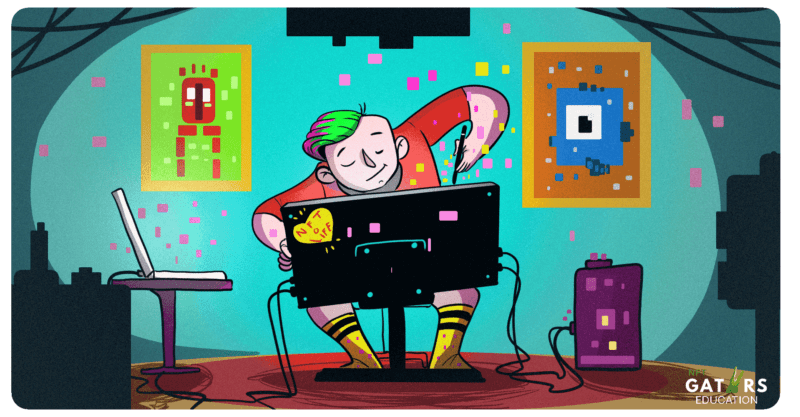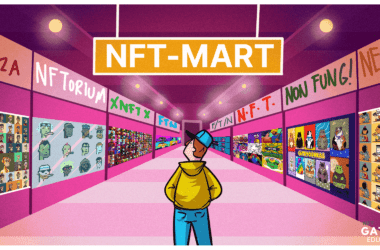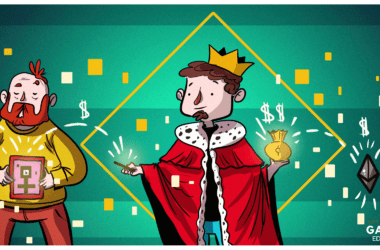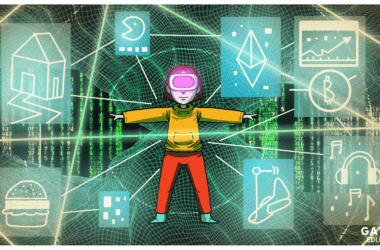Last Updated on February 1, 2023
With NFTs transforming the face of the art industry, millions of people are considering starting their own NFT art gig, either to supplement their income or to pursue a full-time career. Furthermore, many artists who currently earn a living selling work in the real world have been enticed by the exorbitant amounts offered for digital art by investors and are trying to get in on the action (and who could blame them)?
On that note, if you’re considering starting your own NFT art gig, you undoubtedly have a million questions running through your head on how to get started, especially if you’re unfamiliar with the cryptocurrency industry. After all, the world of NFTs is riddled with jargon and technical lingo that might make the prospect of launching an NFT gig daunting to a beginner.
However, the good news is that anyone with an Internet connection and a cryptocurrency wallet can become a crypto artist, and the learning curve isn’t all that steep. On that point, here is a step-by-step method to becoming an NFT artist and selling your work online.
Table of Contents
How to Become an NFT Artist in 9 Steps
Make your digital art
First things first, if you want to become an NFT artist, you’re going to need some art to sell. Of course, this is far easier said than done. But, since we can’t give you the lowdown on what type of art will make you millions or what trend is going to take off next, it’s up to you to figure out what direction you want to go in and what artistic style you will pursue.
With that said, it’s a good idea to carve out a niche when creating your digital art. This is because it allows you to hone your skills in one particular area while building a following/audience that understands the type of work you make and what they can expect from you in the future. Consistently is key.
Although, you mustn’t pigeonhole yourself into one area to the point where you feel confined to one artistic style. After all, the NFT world is a vast new place to be explored, and at the moment, it seems like anything goes. So let your passion and interest dictate where you go and let the rest figure itself out.
Select the blockchain you wish to use
NFTs are hosted on the blockchain, a distributed, decentralized, public ledger that exists across a network. As it turns out, there are several blockchains for you to choose from when searching for a network to host your NFTs, each of which has its own set of pros and cons. Some of the most popular options include:
- Ethereum
- Cardano
- Polygon
- Tezos
- Bitcoin cash
- Solana
- Flow
- Wax
- Klaytn
Ethereum is the clear favorite amongst NFT artists and investors alike. In fact, a whopping 97% of NFT sales occur on the Ethereum blockchain. Therefore, if you want to have the smoothest experience and appeal to the widest audience, it’s advised to stick with Ethereum for the time being.
Set up your crypto wallet
You’re going to need a crypto wallet to create, sell, hold, and transfer NFTs. Once again, there are several options you could go for here. Most marketplaces suggest that you use MetaMask, an easy-to-use browser extension for Chrome (also available as a smartphone application).
Load your wallet with the appropriate currency/tokens
Once you’ve got your wallet, you need to load it with the cryptocurrency that powers your blockchain of choice. If you chose Ethereum, you’re going to need some ETH. If you choose Polygon, you’ll need MATIC tokens.
You need these funds so you can pay for the gas fees when moving and transferring your digital art.
Choose your marketplace
Next, you have another choice to make – what marketplace you will use. This will typically be where you mint, market, and sell your NFTs, so make sure you choose wisely. Depending on what type of art you are selling, you may be better off going to a marketplace dedicated to your particular niche since you will find it easier to connect with interested buyers (such as Axie for gaming items).
However, if you want to keep things simple, you can’t go wrong with the industry-leading marketplaces such as OpenSea and Rarible since they offer all kinds of NFT assets such as art, music, videos, and just about everything in between.
Mint your NFT
Now it’s time to mint your NFT and turn your art collection into a piece of blockchain history. Minting your NFTs is actually a lot more straightforward than it sounds as long as you have a compatible wallet loaded with the relevant funds.
Set your prices
You’ve created your NFT and are now ready to sell to another NFT enthusiast. However, you must complete one critical step first, and that is to determine your prices. Only you can decide how much or how little to charge for your artwork. However, it’s a good idea to research your field to see what other similar artists are charging for their work. Of course, if this is your first NFT and you haven’t yet established a following, commanding a high fee may be challenging at first, but certainly not impossible.
Sell your NFT
The time has finally come. Now that you’ve completed all of the necessary steps, you can list your NFT on your preferred marketplace. If you’ve ever used eBay, the procedure is essentially the same. Most platforms will provide you with a few options for how to list your NFT.
On OpenSea, you can pick between a Fixed Price listing and a Timed Auction, which are both quite self-explanatory. Furthermore, you can also choose to sell multiple NFTs as a bundle or reserve your NFT for a specific buyer (if you have already agreed outside of the platform). Once you’ve determined the approach that is ideal for you, all that remains is to specify the duration and click “Complete Listing.”
Congrats! Your first NFT listing is live. Let’s hope a buyer is just around the corner.
Consider marketing your art
Last but not least, if you want to make it as an NFT artist, you need to find a way to market your art and build up some sort of following. In many ways, becoming an NFT artist is all about learning how to build a brand, nurture a community, and pique interest in your artwork. The good news is that there are many various ways for kickstart an NFT marketing campaign. Here are some tips to get you started:
- Establish a presence on the major social media channels (Twitter and Instagram)
- Become active in the NFT community (Reddit, Discord, and Twitter)
- Create a professional portfolio website
- Host a giveaway to spike interest in your NFTs and your brand
- Collaborate with other influencers and NFT artists
It’s all in your hands
With the NFT industry booming and showing no signs of slowing down, now is as good a time as ever to set up your own NFT art gig and start selling your work online. With artists fetching far higher prices online than they ever would in the real world, it makes perfect sense to transition to the NFT world to boost your income,
Even if you aren’t an established artist already, there are plenty of benefits to be had from setting up your gig and building your brand. These days, thousands of potential investors are just waiting to scoop up artwork across a wide variety of niches. Just remember to stay consistent and be true to your passion, and you’ll be sure to find some success. Good luck!
FAQ
How do I become an NFT artist?
To become an NFT artist, first and foremost, you need to have the talent. Then come the "technical" aspects of getting involved in the NFT ecosystem. You will also need a wallet that supports NFTs and a platform to mint your NFTs on. This guide will walk you through the steps.
What kind of digital content can I create as an NFT artist?
As an NFT artist, you can create various types of digital content, such as artwork, music, videos, animations, and more. It is important to choose content that is unique and captivating to potential buyers.
How do I monetize my NFT art?
You can monetize your NFT art by listing it for sale on a marketplace or participating in NFT drops. You can also use your NFT art as a form of payment or access to goods or services.
How can I stand out as an NFT artist?
To stand out as an NFT artist, you must have your own unique style. Then build your personal brand and network, and continuously learning and improving your skills. Promote your NFT art through social media and other channels can also help to increase visibility and sales





